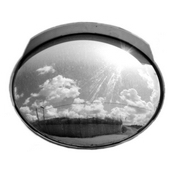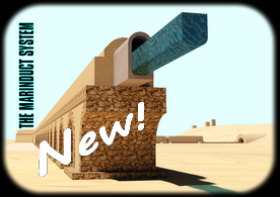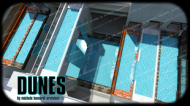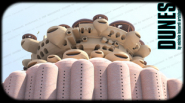Portrait of Gernot Minke.
The fantastic architectures in adobe, 100% ryciclables, by Gernot Minke.
Real bioarchitecture, real green economy,
not gossips, windbags and garbage.
Real millenary sustenable architecture:
Adobe Workshop Anidri1 and Anidri2:
Conferencia Arquitecto Gernot Minke
Parte I, II, III
Other new architectures in adobe:
Earthbag dome home by Lisa Starr,
Joshua Tree, California, USA
SuperAdobe Tiny Homes & Emergency Housing:
low-cost solution
BIBLIOGRAPHY
- Gernot Minke: "Manual de construcción con fardos de paja", Cable a tierra, Santiago, Chile 2017.
- Gernot Minke: "Muros y Revoques de tierra", Cable a tierra, Santiago, Chile 2017.
- Gernot Minke: "Cúpulas de tierra optimizadas", Cable a tierra, Santiago, Chile 2017.
- Gernot Minke: "Cúpulas y bóvedas : para vivir y trabajar, crear y meditar", Icaria Editorial, Barcelona 2017.
Desde la antigüedad se han relacionado ciertas construcciones con una mejor sensación de confort y bienestar. La cúpula es una de ellas. Gernot Mike siempre ha estado fascinado por esta técnica constructiva. Empezó sus primeros prototipos inspirándose en las «Hogans», viviendas de espacio único de los indios navajos. Posteriormente desarrolló cúpulas y bóvedas con todo tipo de materiales (principalmente de adobe o fardos de paja) por todo el mundo. En este libro Minke nos muestra su labor de investigación, para ponerla a disposición del máximo número de personas: usuarios, constructores y técnicos. Este libro recoge obras del arquitecto Gernot Minke desde los años 1975 hasta 2015.
Gernot Minke: Arquitecto con doctorado sobre eficiencias de las estructuras, catedrático jubilado de la Universidad de Kassel, Alemania, donde dirigió el Laboratorio de Construcciones Experimentales desde 1974. Ha llevado a cabo más de 50 proyectos de investigación y desarrollo en el campo de construcciones ecológicas, viviendas de bajo costo, construcciones en tierra, fardos de paja, bambú y techos verdes. Ha sido invitado como ponente a más de 60 conferencias internacionales; ha orientado numerosas charlas, cursos y talleres en diversos países del mundo; ha publicado más de 300 artículos en revistas especializadas y es autor de los libros Manual de construcción con tierra, Manual de construcción con fardos de paja, Manual de construcción con bambú, Techos verdes y Cúpulas y bóvedas que han sido editados en varias lenguas.
- Gernot Minke: "Iranische Ausgabe vom Handbuch Lehmbau", Teheran 2016.
- Friedemann Mahlke: "De las tensoestructuras a la bioarquitectura, la obra del arquitecto Gernot Minke", EcoHabitar, Teruel, España 2015.
- Gernot Minke: "Muros y fachadas verdes, Jardines verticales", Icaria, Barcelona 2015.
- Gernot Minke: "Muros de barro", Icaria Editorial, Barcelona 2015.
- Gernot Minke: "Revoques de barro", Icaria Editorial, Barcelona 2014.
Todos los secretos para realizar revoques con un material excelente: práctico, económico, saludable para las personas, sustentable para el medio ambiente y al alcance de todos. Décadas de experiencia volcadas en un breve manual con detalles sobre la preparación de las mezclas, los aditivos, refuerzos, pinturas, impermeabil.
- Gernot Minke: "Muros de Barro. Sistemas, ejecución, consejos practicos", BRC ediciones, Bariloche, Argentina 2014.
- Gernot Minke: "Revoques de Barro. Mezclas, Aplicaciones y Tratamientos", BRC, Bariloche, Argentina 2013.
- Gernot Minke: "Podrecznick budowania z gliny. Materialoznawstwo, Technologia, Architektura", polnische Übersetzung von Handbuch Lehmbau, 2013.
- Gernot Minke: "Building With Earth. Design and Technology of a Sustainable Architecture", third revised edition, Birkhäuser Publisher Basel 2013.
- Gernot Minke: "Revoques De Barro", Mezclas, Aplicaciones y Tratamientos, merlin Cali Colombia 2013.
- Gernot Minke: "Szalmabála építés", ungarische Übersetzung von Handbuch Strohballenbau, Budapest 2012.
- Gernot Minke: "Building with Bamboo. Design and Technology of a Sustainable Architecture", Birkhäuser Publisher Basel 2012.
- Gernot Minke: "Muros y fachadas verdes, jardines verticales. Sistemas y Plantas, Funciones y Aplicaciones", Cali, Colombia 2012.
- Gernot Minke: "Cúpulas y Bóvedas para vivir y trabajar, para hacer música y meditar", Cali, Colombia 2010.
- Gernot Minke: "Gewölbe zum Wohnen und Arbeiten, zum Musizieren und Meditieren - Bauten des Architekten Gernot Minke aus den Jahren 1975 bis 2010", Schriftreihe Lehmmuseum Gnevsdorf, FAL e.V., 2010.
- Gernot Minke: "Manual de Construcción con Bambú", Cali, Colombia 2010.
- Gernot Minke: "Manual de construcción con tierra. La tierra como material de construcción y su aplicación en la arquitectura actual", EcoHabitar Olba-Teruel, Espana, Agosto 2010.
El “Manual de construcción en tierra” de Gernot Minke, está orientado al estudio de ese material de construcción y sus múltiples aplicaciones. Aunque basado en la versión original en alemán “Lehmbau-Handbuch”, ha sido modificado en su contenido para satisfacer las expectativas de lectores de diferentes nacionalidades, incluyendo ejemplos de nuevos proyectos, tanto de nuestro país como de latinoamérica y una mayor cantidad de ilustraciones y fotografías que lo enriquecen y facilitan su comprensión.
- Gernot Minke: "Techos Verdes, Planificación, Ejecución, Consejos practicos", EcoHabitar Olba-Teruel, Espana, Agosto 2010.
- Gernot Minke: "Japanische Übersetzung von: Building with Earth", Nishimura Co, Japan 2010.
- Gernot Minke: "Dächer begrünen - einfach und wirkungsvoll", Ökobuch Verlag (Staufen), 4. erweiterte Auflage 2010.
- Gernot Minke: "Techos Verdes, - Planificación, Ejecución, Consejos practicos", Segunda edición, Cali, Colombia 2010.
- Gernot Minke und Benjamin Krick: "Handbuch Strohballenbau, Grundlagen, Konstruktionen, Beispiele", Staufen 2009.
- Gernot Minke: "Handbuch Lehmbau, Baustoffkunde, Techniken, Lehmarchitektur", Staufen 2009.
- Gernot Minke: "Přiručcka hliněného stavitelstvì", Bratislava 2009.
- Gernot Minke, Friedemann Mahlke: "Stavby ze slámy", Ostrava Plesn.. 2009.
- Gernot Minke: "Building with Earth - Design and Technology for a Sustainable Architecture", Birkhäuser Basel/Berlin, 2. Aufl. 2009.
- Gernot Minke: "Φúτεuση στεyωv", Thessaloniki 2009.
- Gernot Minke: "Constriund cu Pământ", Bukarest 2008.
- Gernot Minke: "Manual de construcción en tierra - la tierra como material de construcción y sus aplicaciones en la arquitectura actual", Editorial Fin de siglo, Montevideo, Tercera ed. 2008.
- Gernot Minke, Friedemann Mahlke: chinesische Übersetzung von "Der Strohballenbau", 2007.
- Friedemann Mahlke: "De las tensoestructuras a la bioarquitectura - La obra del arquitecto Gernot Minke".
- Friedemann Mahlke: "Schwerelos und Erdverbunden - Vom Leichtbau zum Lehmbau: Das Werk des Architekten Gernot Minke", Ökobuch Verlag (Staufen), 1. Auflage 2007.
- Gernot Minke: "Manual de construcción con fardos de paja", Editorial Fin de siglo, Montevideo, Uruguay 2006.
- Gernot Minke and Friedemann Mahlke: "Building with Straw - Design and Technology of a Sustainbable Architecture", Birkhäuser Basel/Berlin, 2005.
- Gernot Minke: "Manual de construcción para viviendas antisísmicas de tierra", Forschungslabor für Experimenteles Bauen, Universidad de Kassel, Alemania, 2005.
- Gernot Minke: "Construction manual for earthquake-resistant houses built of earth", GATE-BASIN/ GTZ GmbH, 2001.
- Gernot Minke: "Techos verdes, Planificación, ejecución, consejos practicos", Editorial Fin de siglo, Montevideo, Uruguay, 2004.
- Gernot Minke: "Der Strohballenbau", Ökobuch Verlag (Staufen), 1. Auflage 2004.
- Gernot Minke: "Das neue Lehmbau-Handbuch - Baustoffkunde, Konstruktionen, Lehmarchitektur", Ökobuch Verlag (Staufen), 6. verb. und erw. Auflage 2004.
- Gernot Minke: "Zöldtetök", Budapest, 2002.
- Gernot Minke: "Zelené strechy - Plánování, realizace, príklady z praxe", Ostrava-Plesná, 2001.
- Gernot Minke: "Experimentelles Bauen", Kassel, 2. Aufl. 1999.
- Maddalena Achenza and Ulrico Sanna: "Il manuale tematico della terra cruda", D.E.I., Rome, Italy, 2006.
- Bruno Pignal: "Terre crue : Technique de construction et de restauration", Editions Eyrolles, Paris, France, 2005.
- Gernot Minke: "Handbuch Lehmbau: Baustoffkunde, Techniken, Lehmarchitektur".
- Gernot Minke: "Manual de construcción con tierra".
- Gernot Minke: "Earth Construction Handbook - The Building Material Earth in Modern Architecture", WIT Press, 2000.
Describes all relevant physical and structural data - most of them recently investigated - of earth as a building material earth, explains all earth construction techniques, gives guidelines for repairing earth buildings, illustrates the variety of applications from improved earth building components and depicts several representative earth buildings from all over the world.
- John May: "Buildings without Architects - A Global Guide to Everyday Architecture", Bertagnin Mauro, Mungiguerra Clelia, and Achenza Maddalena: "Architetture di terra in Italia. Tipologie, tecnologie e culture costruttive", Edicom Edizioni, 1999.
- Giovanni Morabito and Roberto Bianchi: "La decrescita prosperosa dell'edificio. Architecture from high tech to low cost".
Una serie di riflessioni sulle trasformazioni economiche della produzione e del mercato, sull’approccio costruttivo low cost, sull’evoluzione dei sistemi di connessione e delle strategie di manutenzione, sul riciclo e reimpiego dei materiali e dei componenti, sui nuovi caratteri della materialità e della produzione, che complessivamente definiscono una rinnovata dimensione operativa in cui l’episodio costruttivo conduce a configurare una originale immagine comunicativa dell’architettura.
- AA.VV., a cura di F. Storelli: "Habitat e architetture di terra. Le potenzialità delle tradizioni costruttive".
- Joseph Davidovits: "Geopolymer Chemistry and Applications", Institut Géopolymère de Saint-Quintin, France, 2013, 3rd Edition.
What can be done about the major concerns of our Global Economy on energy, global warming, sustainable development, user-friendly processes, and green chemistry? Here is an important contribution to the mastering of these phenomena today. Written by Joseph Davidovits, the inventor and founder of geopolymer science, Geopolymer Chemistry and Applications is an introduction to the subject for the newcomers, students, engineers and professionals.
- Michele Leonardi: "Verso un altro habitat: 36 progetti e realizzazioni di Luigi Pellegrin architetto", eBook, Volume 2°, Visione 32: "Piramide Sud America" di Luigi Pellegrin, 1983.
- Pietro Laureano: "Sahara - Giardino sconosciuto", Florence, Italy, 1989.
- Pietro Laureano: "Giardini di pietra - I Sassi di Matera e la civiltà mediterranea", Bollati Boringhieri Editore,Turin, Italy, 1993.
- Pietro Laureano: "La Piramide Rovesciata - Il modello dell'oasi per il pianeta Terra", Bollati Boringhieri Editore, Turin, Italy, 1995.
- Pietro Laureano: "Jardins de pierre: Les Sassi de Matera et la civilisation méditerranéenne", Presses Universitaires de Vincennes, France.
- Pietro Laureano: "Water Conservation Techniques in Traditional Human Settlements", COPAL Publishing, 2013.
- Hassan Fathy, Walter Shearer and Abd-el-rahman Ahmed Sultan: "Natural Energy and Vernacular Architecture: Principles and Examples with Reference to Hot Arid Climates", 1986.
- Hassan Fathy: "Hassan Fathy: construire avec le peuple", Italian edition: "Costruire con la gente - Storia di un villaggio d'Egitto: Gourna".
- James Steele: "Architecture for People: The Complete Works of Hassan Fathy", 1997.
This is an account of Hassan Fathy, one of the most influential Third World architects of the 20th century. The ideas he formulated before his death in 1989 have become key elements in the global architectural agenda, with his influence being particularly profound in the developing world. Fathy's buildings are found all over the world, from Egypt to India to New Mexico. The author was able to conduct extensive interviews with Fathy himself before he died, as well as with clients, family, disciples and friends. The author's research in Cairo and Greece (where Fathy worked from 1957-1962) uncovered many previously undocumented projects and he has drawn on the architect's personal notebooks and journals. Fathy's entire career is chronologically surveyed from his graduation in 1926 to the most productive period of his life - the two decades after his return to Egypt in 1962.
- Hassan Fathy: "Architecture for the Poor: An Experiment in Rural Egypt", Phoenix Books.
Architecture for the Poor describes Hassan Fathy's plan for building the village of New Gourna, near Luxor, Egypt, without the use of more modern and expensive materials such as steel and concrete. Using mud bricks, the native technique that Fathy learned in Nubia, and such traditional Egyptian architectural designs as enclosed courtyards and vaulted roofing, Fathy worked with the villagers to tailor his designs to their needs. He taught them how to work with the bricks, supervised the erection of the buildings, and encouraged the revival of such ancient crafts as claustra (lattice designs in the mudwork) to adorn the buildings.
- Adelina Picone: "La casa araba d'Egitto", Jaka Book, Milan, Italy, 2009.
Il libro propone una disamina, corredata di disegni ed immagini, dei caratteri della casa egiziana nei suoi diversi contesti ambientali: dalle oasi del deserto occidentale all'oasi di Siwa, alle regioni rurali, all'ambiente urbano consolidato della città del Cairo. Il rapporto tra gli elementi naturali, trasposti nelle istanze climatiche, e la forma costruita è la chiave di lettura di questo percorso nell'architettura vernacolare. La lettura critica di alcune opere di Hassan Fathy consente di rintracciare un metodo progettuale basato sulla varia articolazione di alcuni elementi-base, invarianti tipologiche e formali, che lo studio della tradizione ha dimostrato derivare dal rapporto tra architettura ed elementi naturali. Il panorama architettonico dell'Egitto contemporaneo offre, attraverso il lavoro di architetti come Ramses Wissa Wassef, Abdel Wahed El Wakil, interessanti spunti di riflessione sul rapporto tra progetto, clima e tradizione.
- L. Anversa, V. Bentivegna, L.V. Ferretti, A. Filpa, A. Lacava: "Tunisia - Il recupero delle città oasi", Gangemi Editore, Rome, Italy, 1990.
- Pasquale Cascella: "Involucro bioclimatico e solare", Chandra Editrice, Rome, Italy, 2008.
- Pasquale Cascella: "Bioclimatica: storia, tecnica, architettura", Chandra Editrice, Rome, Italy, 2011.
















































